The best way to capture UTM Parameters in Intercom
Here's the best way to capture UTM parameters in Intercom and send them to your CRM and other tools
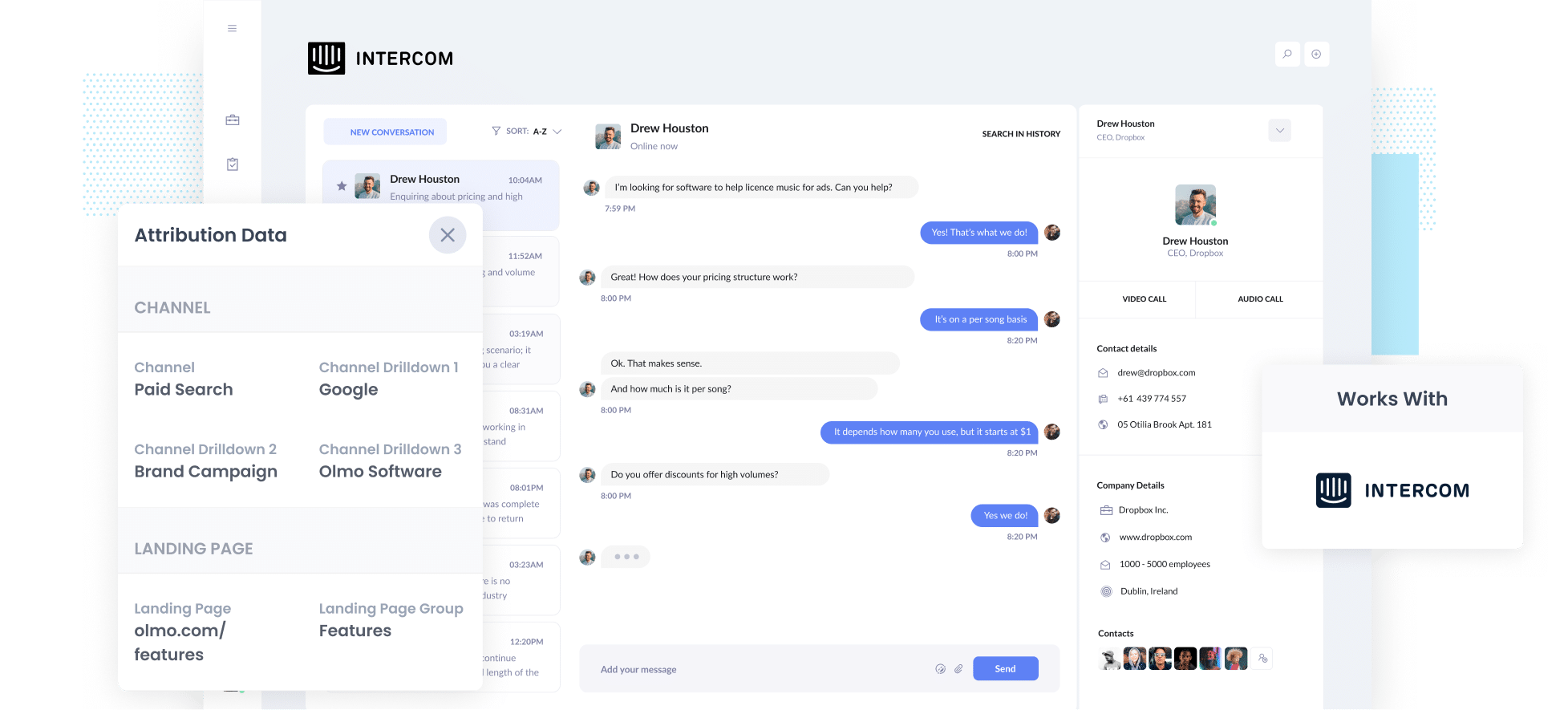
Did you know that 63% of marketers say their biggest challenge is measuring ROI?
For most businesses, tools like Google Analytics make it easy to track the number of visitors coming from various marketing campaigns.
But determining which campaigns are actually driving leads and customers is a whole different story.
But imagine if you could capture UTM parameters with each new lead that starts a chat with you, and then send them on to your CRM and other tools. Then you'd be able to run reports that show how many leads you're getting from your campaigns, how many are becoming customers, how much revenue has been generated, and more.
In this article, we'll show you how to use Attributer to capture UTM parameters (and other lead source data) with each new chat in Intercom, allowing you to see exactly which campaigns are generating real business results.
4 simple steps for capturing UTM parameters in Intercom
Attributer makes it easy to capture UTM parameters in Intercom. Here's how to do it in 4 simple steps:
1. Install Attributer on your website
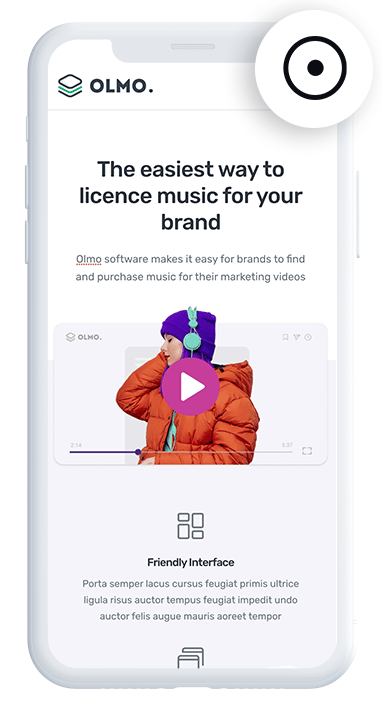
To get started, sign up for a free 14-day trial of Attributer. After creating your account, you’ll receive a small snippet of code to add to your website.
The process of adding the code depends on the platform you're using. In most cases, you can do this through the Settings section or by using a tag manager like Google Tag Manager. Detailed step-by-step instructions (with screenshots) for adding it to major website platforms (WordPress, Wix, Squarespace, Netlify, etc.) can be found here.
2. Attributer tracks where your website visitors come from
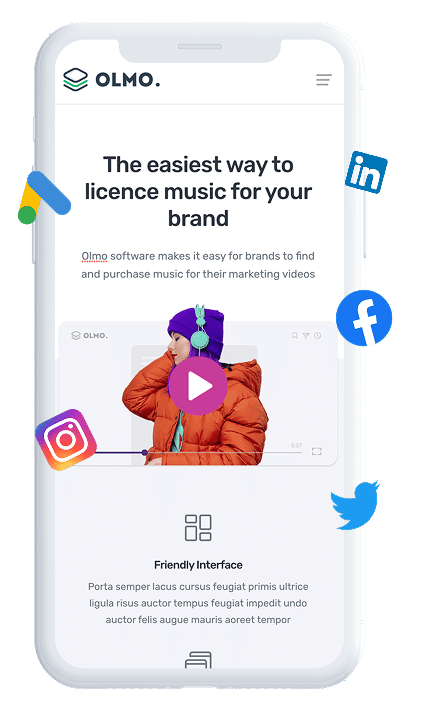
Once installed, Attributer automatically begins tracking where each of your website visitors comes from, categorising them into various Channels (similar to what you see in tools like Google Analytics, such as Paid Search, Paid Social, Display, Organic Search, and more).
Attributer then stores this data in the visitor's browser, ensuring that even if they navigate around your site before starting a chat (or leave and return later), the UTM parameters they arrived with are consistently remembered and passed through.
3. UTM parameters are passed through with each new chat
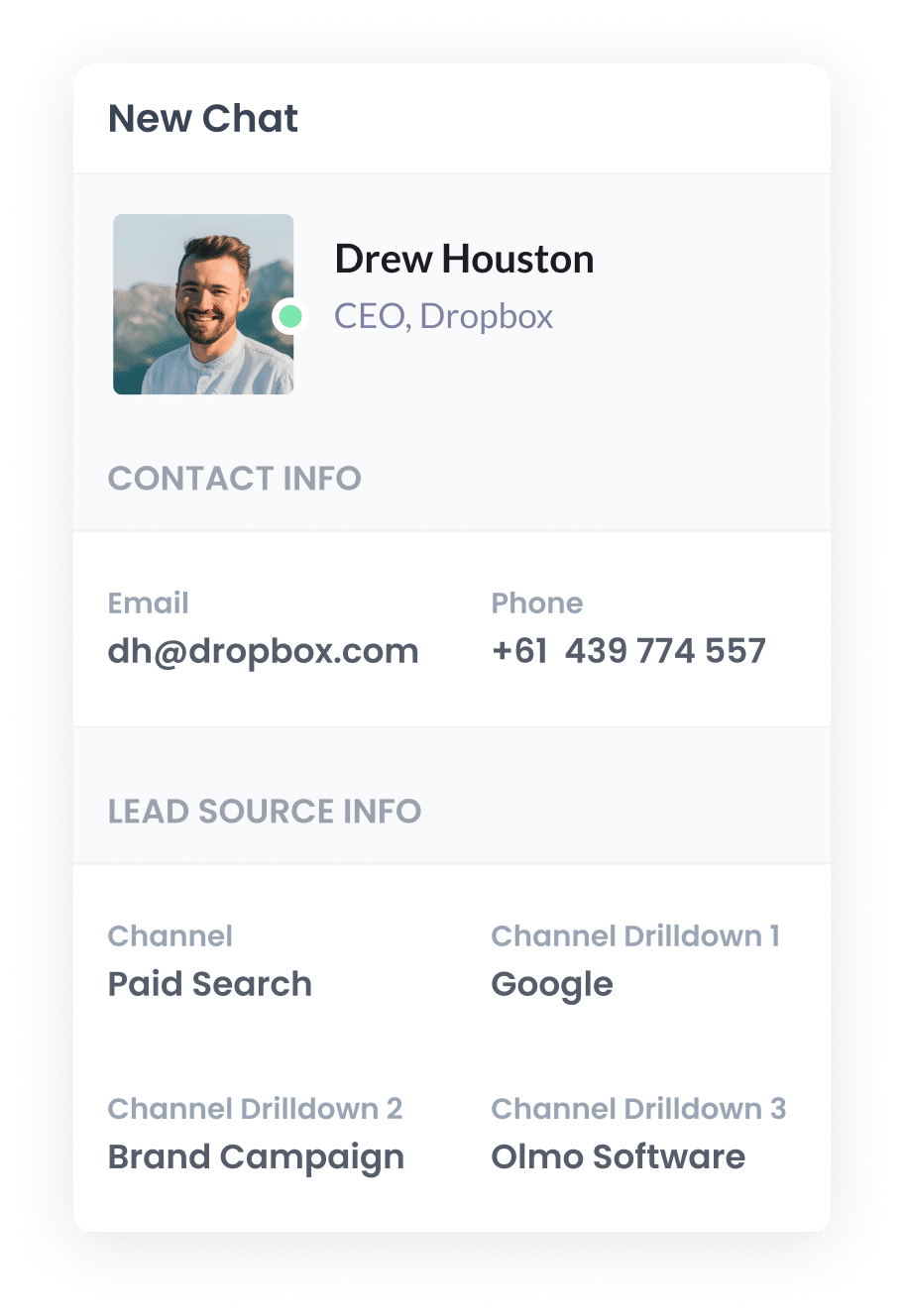
Then, whenever a visitor starts a new chat through Intercom, Attributer passes the UTM parameters (and other attribution data) along with the new chat.
For example, let’s say you’re a marketer at an IT consulting firm called TechTonic.
A potential customer clicks on one of your Google Ads, lands on your homepage, browses your services pages, and then decides to start a chat with your sales team.
Based on the UTM parameters behind the ad, Attributer would pass the following information with the chat:
- Channel = Paid Search
- Channel Drilldown 1 = Google
- Channel Drilldown 2 = Office 365 Support Campaign (or whatever the campaign name is)
- Channel Drilldown 3 = Office 365 Support Providers Near Me (or whatever the keyword they searched for is)
4. Send the data to your CRM and other tools

With the UTM parameters being captured alongside each new chat in Intercom, you can do a variety of things with the data, including:
- View the UTM parameters (and other attribution data) directly in the chat window in Intercom.
- Send the data to CRM tools like Salesforce, Hubspot, Pipedrive, Zoho CRM and more. From there, you can use the built-in reporting tools to run reports that show which campaigns, ads, etc., are generating your leads and customers
- Use tools like Zapier to send the data to Google Sheets or Excel. Once in the spreadsheet, you can filter and analyse it, or connect to tools like Looker Studio (formerly Google Data Studio) or Power BI to create charts and dashboards for your business.
Why Attributer is the best way to capture UTM parameters in Intercom
Here are 4 reasons why using Attributer is the best way to get UTM parameters into Intercom:
1. Captures all traffic
Attributer captures information on ALL your lead sources, not just the ones from paid ads with UTM parameters.
So whether a lead comes from Organic Social, Organic Search, Direct Traffic, or even a referral from another website, Attributer will pass that data into Intercom.
This enables you to create reports that show where every lead is coming from, giving you a complete picture of your lead sources, not just those tied to your ad spend.
2. Remembers the data as visitors browse your site
Most tools for capturing UTM parameters only work if the parameters are present in the URL when a chat begins. This can be a problem if a visitor clicks on an ad, navigates through a few pages, and then starts a chat, as the UTM parameters could be lost during that process.
For example, let’s say a user clicks on your Facebook Ad and lands on your homepage. They browse several other pages on your site before starting a chat. By the time they start the chat, the UTM parameters would have been removed from the URL, meaning Intercom won’t be able to capture them.
Attributer fixes this by storing UTM parameters in the user’s browser. So, even if they visit other pages or leave return to your site before starting a chat, the UTM parameters from their first visit are remembered and passed into Intercom with the chat.
3. Provides cleaner data
It’s common for UTM tagging to become inconsistent over time, particularly when different people or agencies are managing your campaigns.
For instance, some of your Google Ads might be tagged with UTM_Source=Google, others with UTM_Source=google.com, and some with UTM_Source=adwords.
If you’re simply capturing the raw UTM data with each new chat and trying to report on how many leads you’ve generated from Google Ads, these would show up as three separate sources. This means you’d have to manually clean and consolidate the data to get an accurate report.
Attributer solves this by automatically handling these inconsistencies. It’s designed to recognise variations like this and correctly assign leads to the right channel (e.g., Paid Search).
4. Captures GCLID, FBCLID, MSCLKID and other information
In addition to capturing the UTM parameters attached to your ads, Attributer can also pass-through click IDs (such as the Google Click ID, Microsoft Click ID, etc.) with each new chat.
This allows you to set up offline conversion tracking in the various ad platforms by sending conversion data back to the ad platform when a visitor becomes a lead (or even when they eventually convert into a customer).
Attributer can also capture other valuable information, like how long it took the user to convert (i.e., how many days passed between their first visit to your site and their first chat), as well as the number of times they visited your site before converting.
4 example reports you can run when you capture UTM parameters in Intercom
If you’re using Attributer to capture UTM parameters in Intercom and you send that data to your CRM and other tools, you can generate reports that reveal which channels, campaigns, ads, etc. are driving the best results.
Having led marketing teams at various companies for over 15 years and spent millions on Google and Meta ads, I’ve run probably hundreds of reports to track their effectiveness.
Here are 4 of the most useful reports I’ve found over the years to help get you started:
1. Leads by Channel
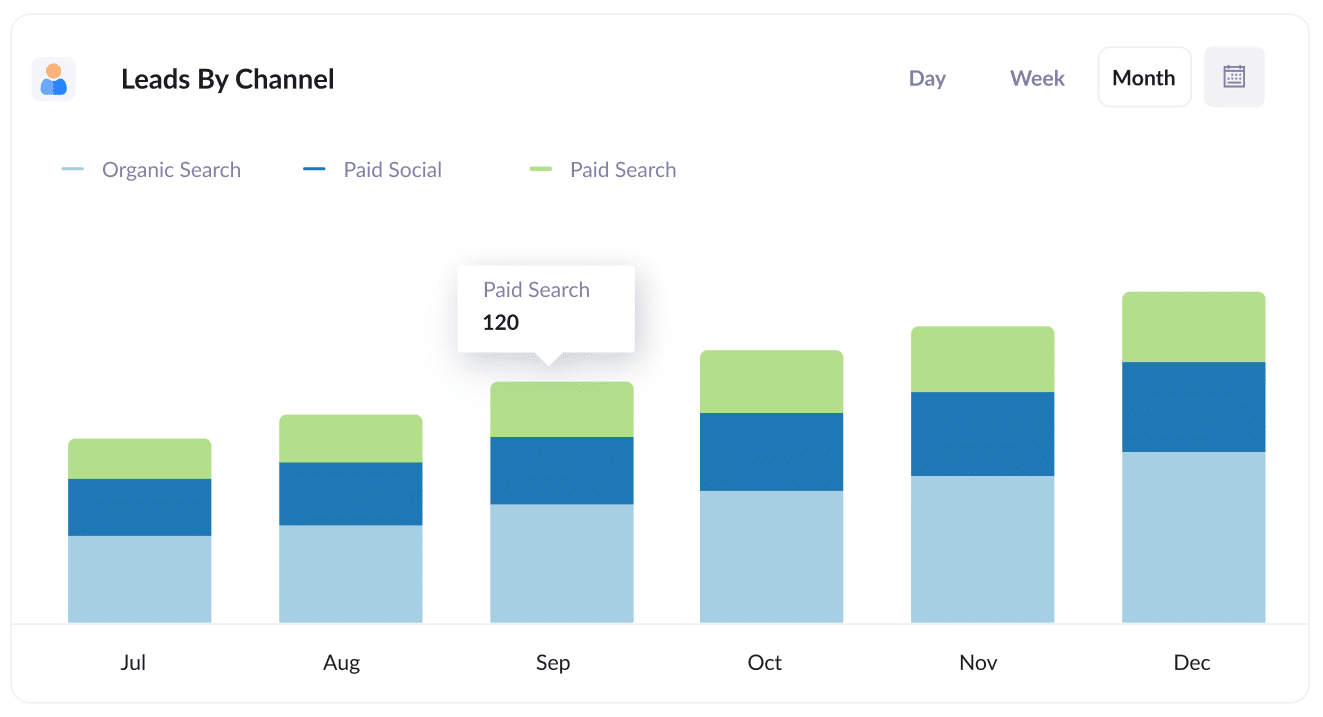
Since Attributer tracks the source of every lead (not just those from paid campaigns), you can create reports like this one that show monthly lead volume by channel.
Having this high-level overview makes it much easier to identify which channels are performing well and where you should focus your marketing efforts.
For example, if you’re seeing the majority of your leads coming from Organic Search but have allocated most of your budget to Paid Search ads, it might be time to reconsider how you distribute your budget.
2. Leads by Meta Ads Network
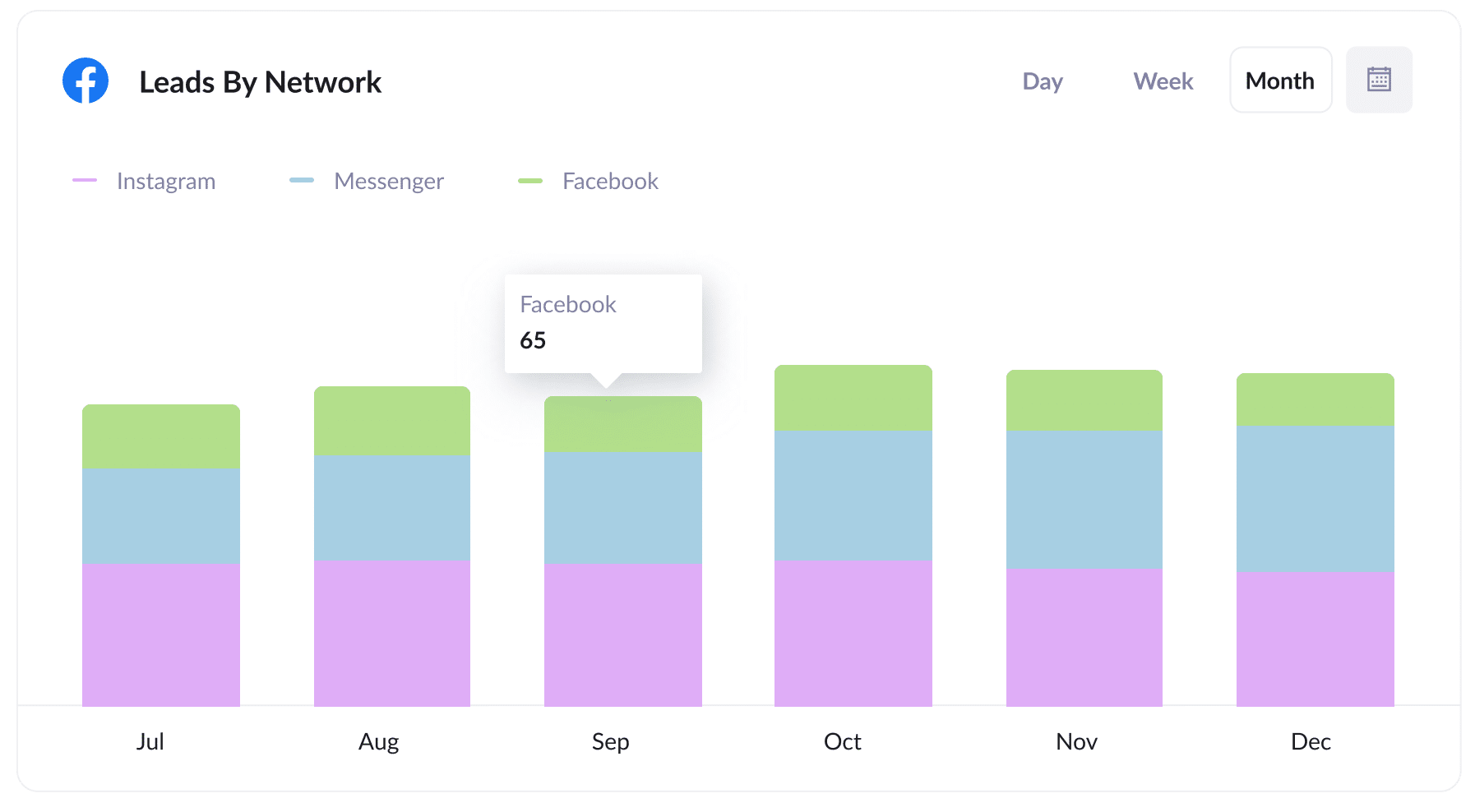
If you’re running Meta Ads, there’s a good chance your campaigns are being displayed across various Meta platforms, including Facebook, Instagram, Messenger, and more.
This report gives you a clear view of which platform is driving the most leads.
With that insight, you can adjust your budget and focus your spend on the platforms that are delivering the best results.
3. Customers by Google Ads campaign
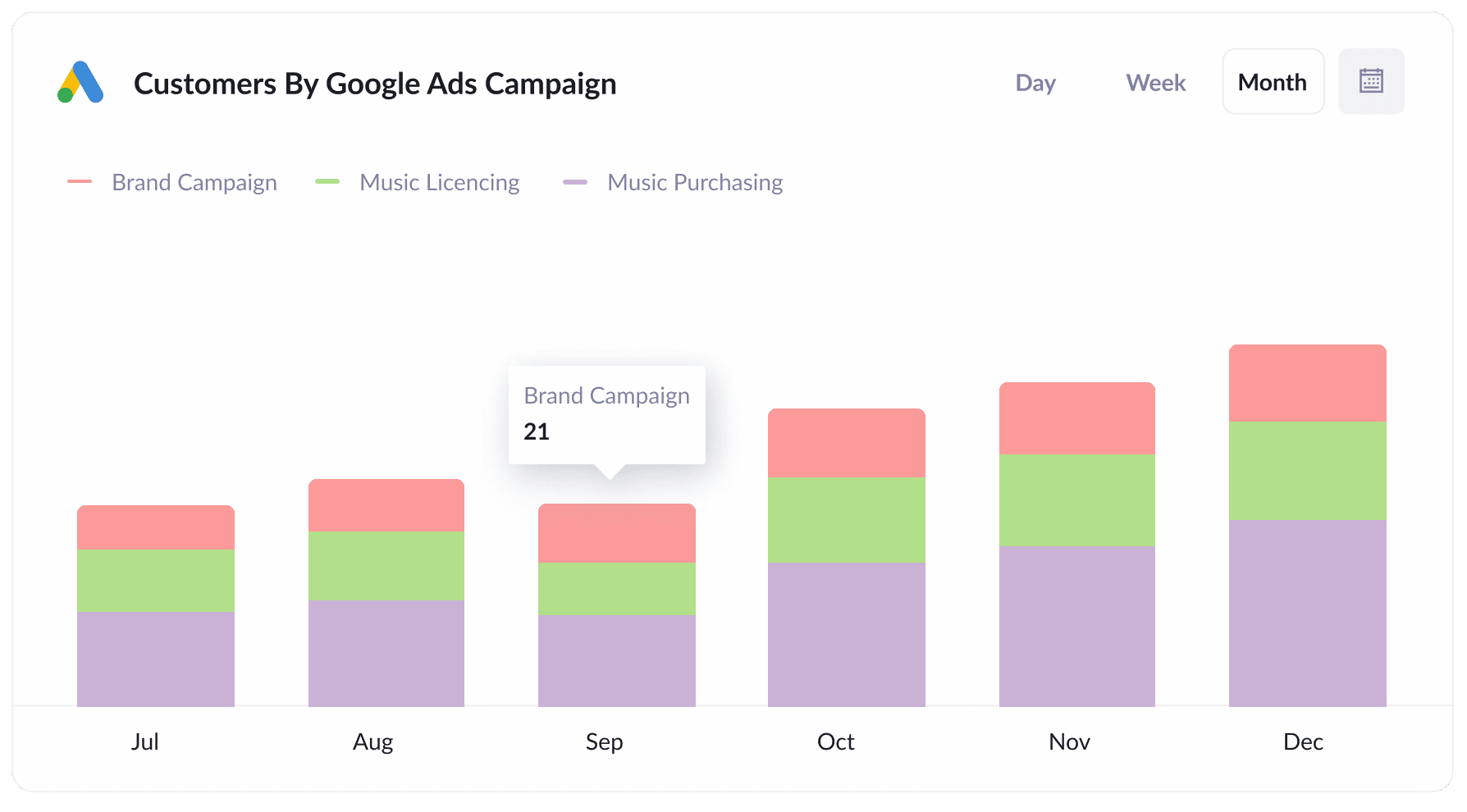
If you're like most businesses, you likely have several campaigns running in your Google Ads account. One could be targeting brand terms, another focused on competitor keywords, and a few more promoting various products or services.
If that sounds familiar, this report will be incredibly useful. It shows how many customers you're gaining each month from each individual campaign.
With these insights, you can make more informed decisions about where to allocate your budget, whether that means investing more in the campaigns that are performing well or scaling back on the ones that aren't delivering results.
4. Revenue by Keyword
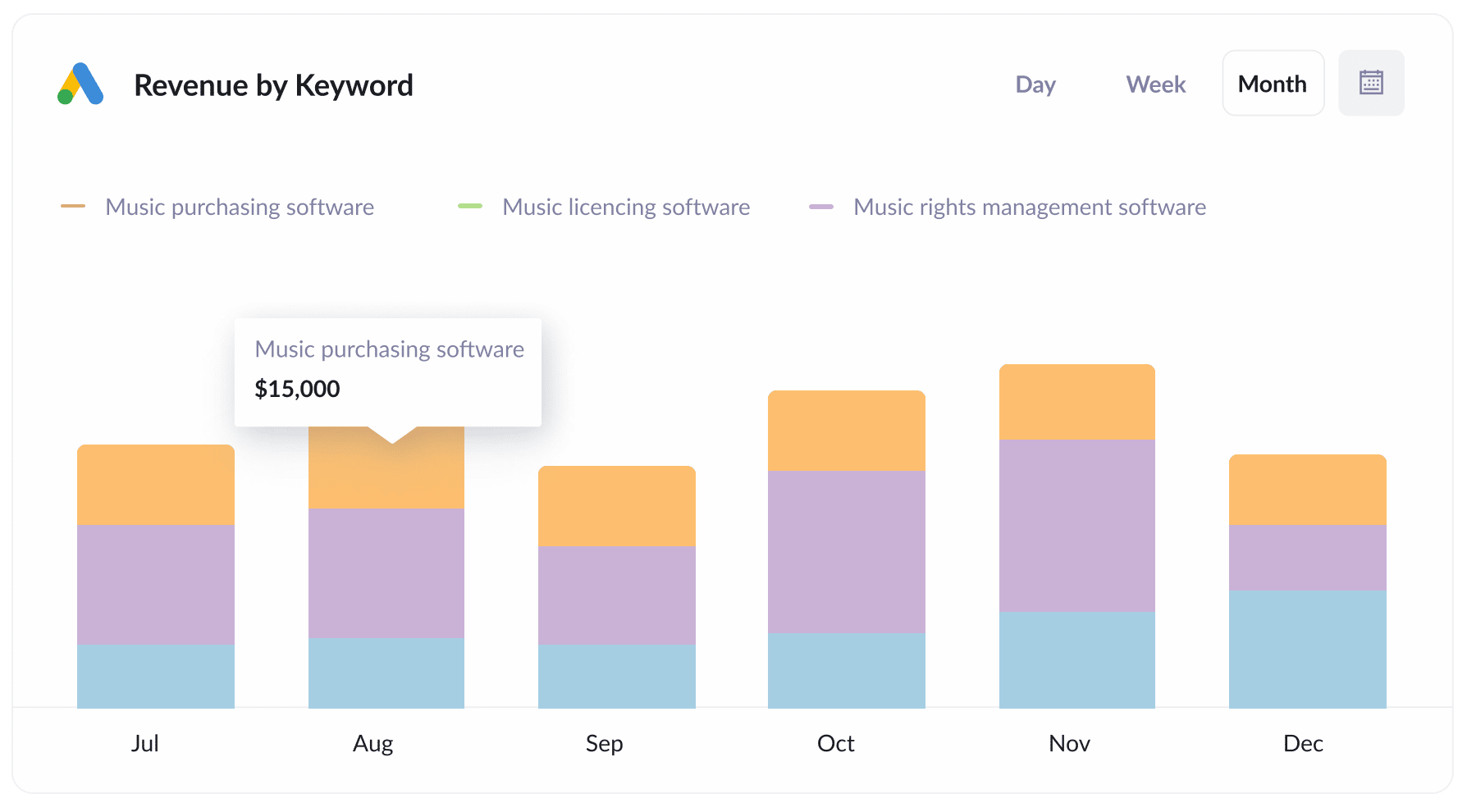
By including the keyword in the UTM parameters behind your Google Ads (which is easy to set up using tracking templates), you can capture the specific keyword the user searched for.
This provides you with a clear understanding of which keywords are delivering the best results for your business, helping you determine which ones might be worth increasing bids on to improve impression share or ranking.
How Attributer helped Qwilr track the source of all their leads and customers
Qwilr, an Australian-based software company, helps businesses create sales proposals as beautiful webpages, rather than the typical boring PDFs.
There are a variety of ways they capture leads: users can sign up for a free trial, book a demo with the sales team, start a chat with a sales representative via the website chat, join a webinar, and more.
Before using Attributer, Qwilr had implemented a custom system to track where free trial sign-ups were coming from. However, they had no way of tracking the source of leads who booked a demo, started a chat, attended a webinar, and so on.
That’s where Attributer stepped in.
Thanks to Attributer’s compatibility with various tools, Qwilr was able to pass UTM parameters and other lead source data whenever someone booked a demo, started a chat, registered for a webinar, and even during their free trial sign-up flow. This meant they were collecting attribution data on ALL of their leads, no matter how they came in.
This led to some interesting insights that helped improve their growth.
For example, Qwilr was running a variety of Google Ads campaigns, including search ads, display ads, performance max campaigns, and more. With Attributer capturing data on all their leads, they discovered that although their display and performance max campaigns were driving lots of visitors, very few were converting into leads and customers. As a result, they paused those campaigns and reallocated their budget to the search campaigns, ultimately driving more customers at a lower cost.
“Attributer gives us clean, structured marketing attribution data across all our various lead sources. It’s helped us know what paid campaigns are working, how certain types of content perform, how our SEO efforts are tracking, and more”

Mark Tanner - Co-Founder & Chief Revenue Officer
Wrap up
If you’re looking for a way to capture UTM parameters in Intercom, Attributer is your best option.
Not only does it capture UTM parameters and pass them into Intercom when a new chat is initiated, but it also sends through attribution information for leads coming from organic channels (such as Organic Search, Organic Social, etc.).
This means you'll be able to track where all your leads and customers are coming from, not just those generated by your paid ads.
Ready to give it a try? We offer a 14-day free trial, so get started with Attributer on your website today.
Get Started For Free
Start your 14-day free trial of Attributer today!

About the Author
Aaron Beashel is the founder of Attributer and has over 15 years of experience in marketing & analytics. He is a recognized expert in the subject and has written articles for leading websites such as Hubspot, Zapier, Search Engine Journal, Buffer, Unbounce & more. Learn more about Aaron here.
